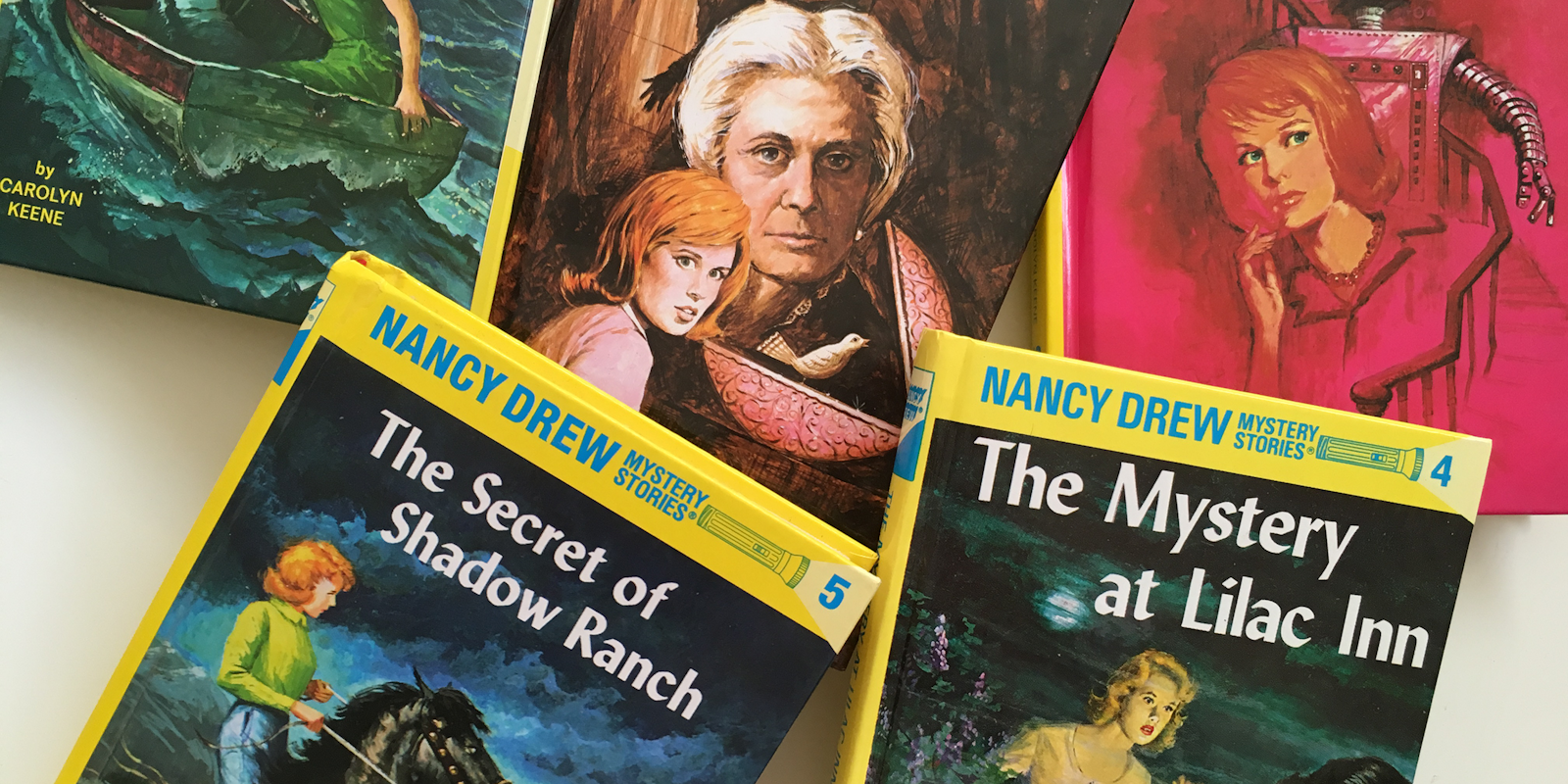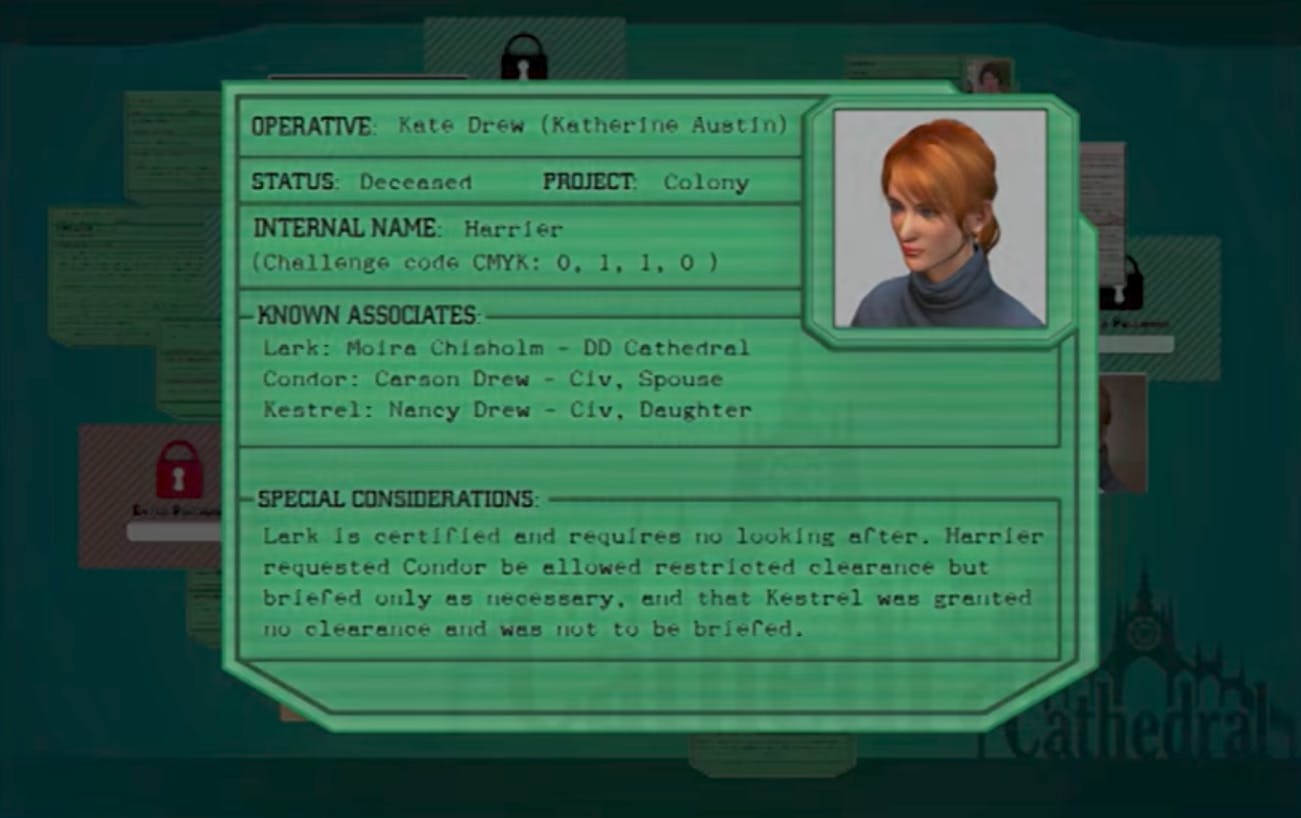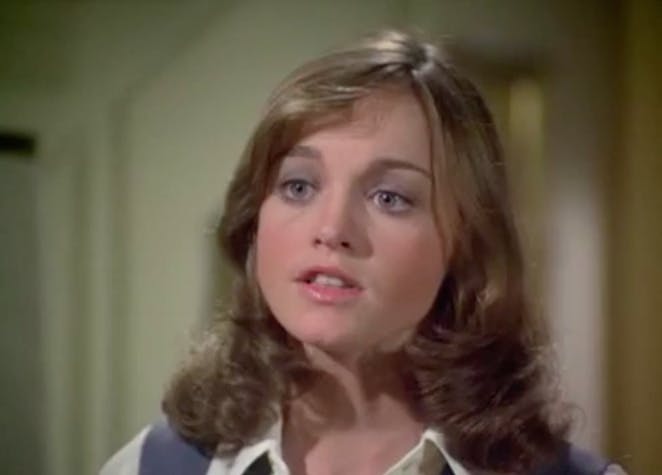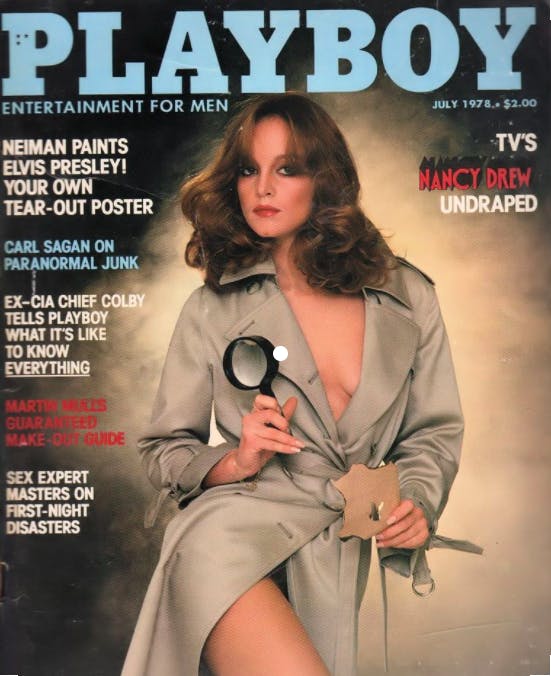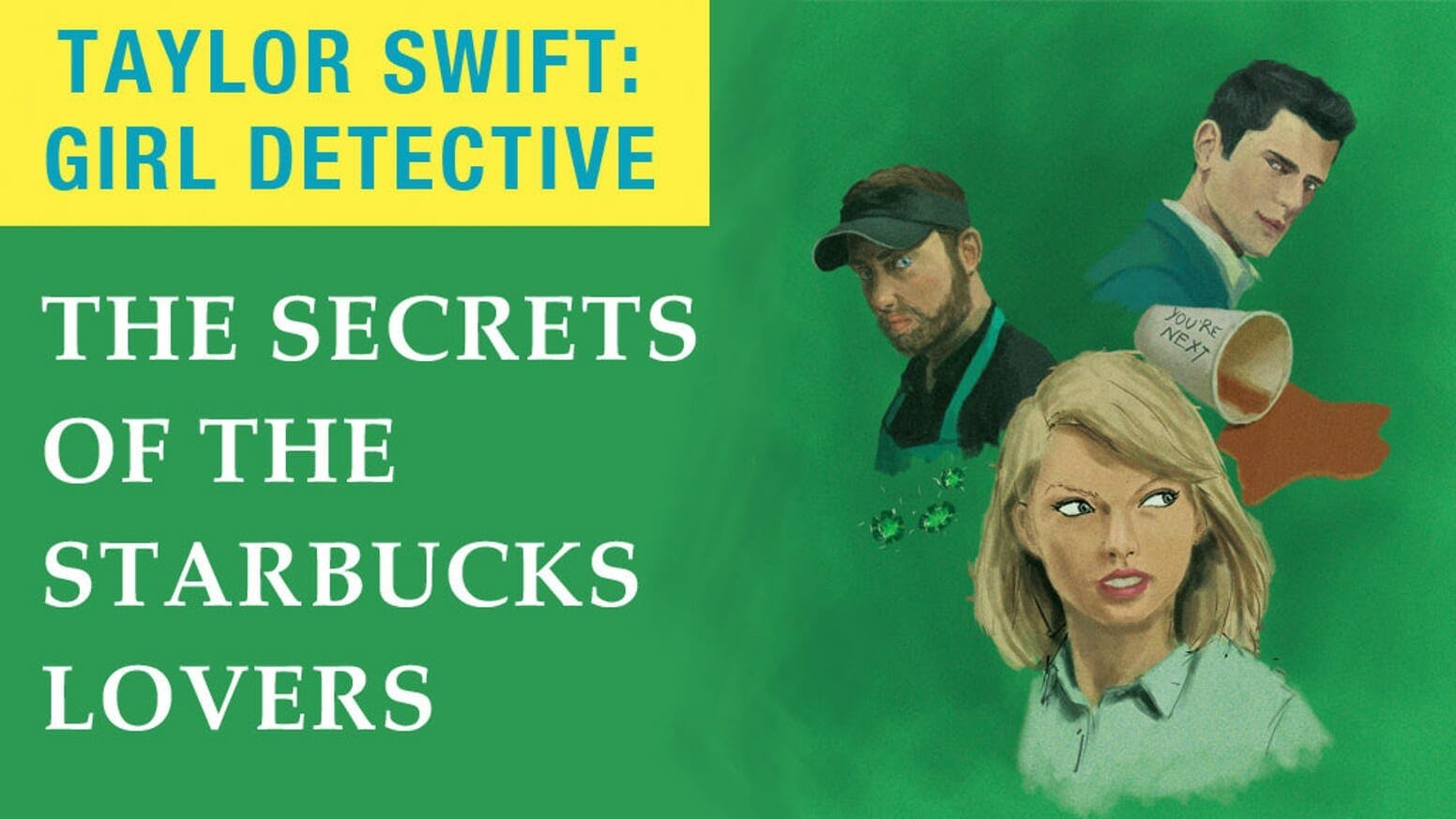At the age of 16, Nancy Drew rescued her abducted father, busted up a “nature cult” that looked a lot like the Klu Klux Klan, and wrangled herself a “phantom” horse. Less of a character and more of an enigma, the main character of the Nancy Drew series has inspired countless young girls to subvert their societally expected subservience, question authority, and pursue adventure. She is the archetype of the independent young woman.
With more than 250 books, five movies, one made-for-TV movie, four TV series, 32 computer games, several mobile apps, and books for young children still in print, Nancy Drew remains a favorite among generations. Here are a few more facts you might not have known about the teen sleuth who’s even inspired her own community of Nan fans who share “Clue Crew” memes online and attend annual Nancy Drew conventions IRL.
How to Stream Nancy Drew
18 interesting facts about Nancy Drew
1) The original Nancy Drew Mystery Stories series was edited over time to appear more modern and less racist
From the first book published in 1930 to the last in 2003, many things about Nancy have remained uniform throughout her run as a teen girl inspiration: Nancy is white, born to her affluent father, Carson, a former district attorney, and her mother, who tragically died when Nancy was a child. She and her father reside in a fictitious town called River Heights with their housekeeper Hannah Gruen. Nancy’s freshly graduated from high school and has all the time in the world to solve mysteries, and sometimes gets help from her friends, Bess Marvin and George Fayne, who are cousins, and her boyfriend Ned Nickerson, a student at Emerson College.
However, after an overhauled edit of the first 34 books to remove offensive racial stereotypes, keep the series relevant, and shorten the plots (the process which began in 1959 and finished in the late ’70s), Nancy’s age was bumped from 16 to 18 to reflect changed driving laws, though at the time of original publishing 16 was the earliest age to graduate from high school. Nancy’s hair has changed from blond, to strawberry blond, to Titian, to shades in between. Her iconic blue roadster, also briefly changed to maroon then canary yellow in two early books, became a blue convertible. Hannah was rewritten to be less of a servant and more of a mother figure for Nancy, and Nancy’s real mother was written to have died when Nancy was 10, not when she was 3 as originally stated.
The revision, and the 141 books following, also appeared to soften Nancy’s original spunk, defiance, wit, and bravery, elements that drew many young girls to the series. The edits also poorly addressed offensive stereotypes in the first 34 books—instead of correcting the depiction, they often erased the character’s ethnicities altogether.
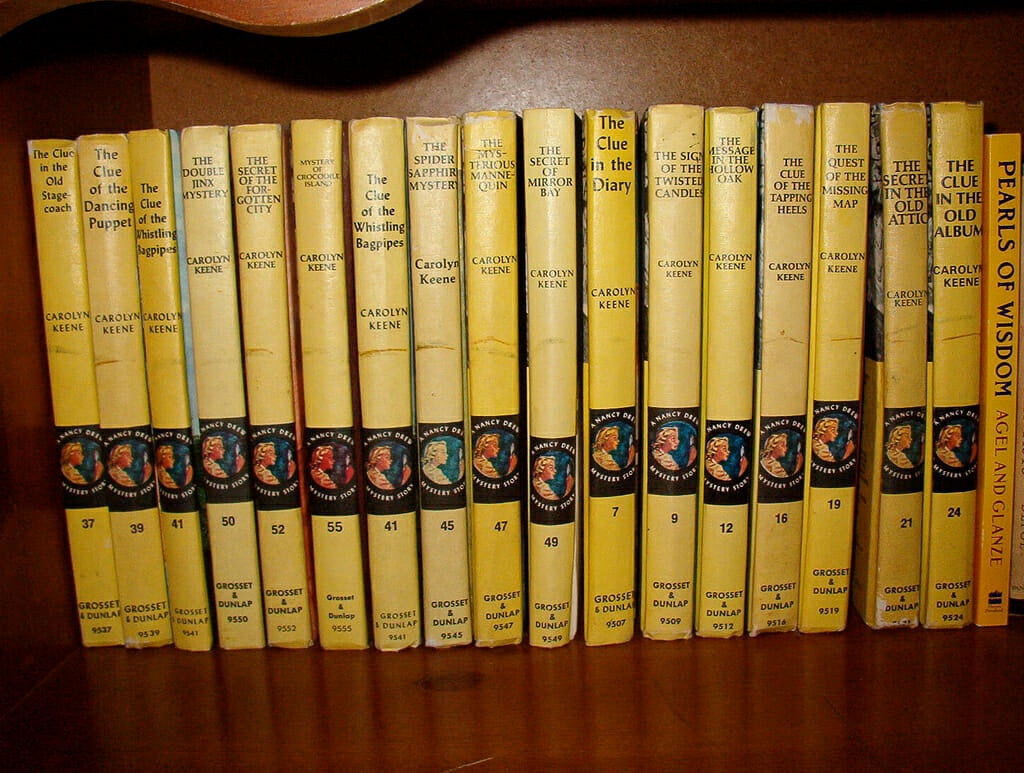
2) The creator of the original Nancy Drew Series was actually a strident believer in “traditional” roles for women
While it’s no surprise that Edward Stratemeyer held these conservative views in the ’20s, he saw the success of the Hardy Boys series—in which brothers Frank and Joe Hardy solve mysteries—as an opportunity to develop a similar series for young girls. Previously, Stratemeyer’s former girl heroines were much more domestic, like Honey Bunch, a character, who the New Yorker points out, “knew exactly how to do a washing for she had watched the laundress many times.”
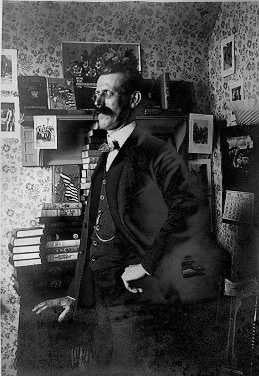
3) All Nancy Drew books are authored by “Carolyn Keene”—a person who does not exist
Carolyn Keene is the pen name used by all Nancy Drew ghostwriters, dating all the way back to 1930. Fortune wrote that using a pen name gave children a way to connect with an author, but the name had to remain with a syndicate, and not depart with the ghostwriter. Stratemeyer would create with a three-page plot for a book, including characters and a story outline, then mailed the plot to a ghostwriter and would receive a manuscript a month later in exchange for $50 to $250, which he would then edit himself.
According to one ghostwriter who spoke to the Atlantic, he was paid $2,000 up front and $2,000 upon completion of each Nancy Drew book in the 1980s. Simon & Schuster, which began publishing the Nancy Drew Mystery Stories in 1979 and still publishes Nancy Drew’s children books today, won’t reveal the names of its current writers.
4) Nancy’s first ghostwriter hated the “namby-pamby” style of girls’ series books at the time and set the bar for Nancy’s charm, wit, and sleuthing skills
Mildred Wirt is credited to have given Nancy her unapologetic gusto, her attraction to adventure (and danger), her independence, and her quick thinking. A fresh college graduate, Wirt wrote 23 of the first 30 books in the Nancy Drew Mystery Stories series. Nancy’s bold traits weren’t so charming to Harriet Stratemeyer Adams, one of Edward’s daughters who took over the Syndicate after his death and who led the editing and reissuing of the first 34 books. Adams, as reflected in her reissued books, thought Nancy should have been more demure and refined.
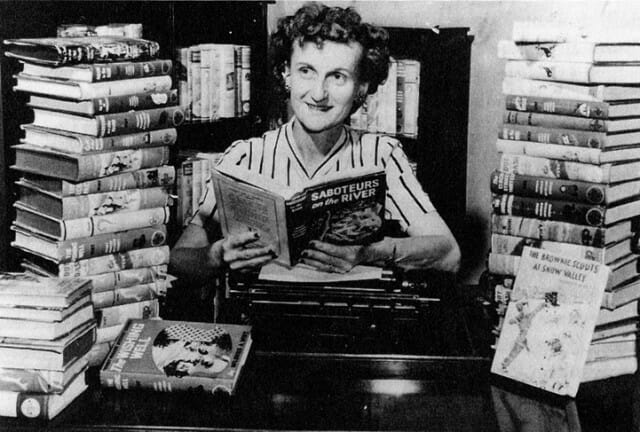 Mildred Wirt Benson
Photo via All Clips
" class="wp-image-269472"/>
Mildred Wirt Benson
Photo via All Clips
" class="wp-image-269472"/>5) A 1926 poll found that 89 percent of kids listed a Stratemeyer Syndicate book as their favorite—and Nancy’s books sold better than any other series
Stratemeyer was big in the early 1900s. From 1899 to 2005, the Syndicate produced more than 100 different series. However, the Bobbsey Twins, the Hardy Boys, the Rover Boys, Tom Swift, and Nancy Drew became the syndicate’s most popular characters. By 2004, more than 200 million of Nancy’s books had been sold.
After Stratemeyer’s death, Fortune wrote his success was comparable to the early tycoons of the industry: “As oil had its Rockefeller, literature had its Stratemeyer.”
6) From 1935 to 1960, “Nancy” was among the top 15 names for girls
Ms. Drew was popular beyond literature. However, “Nancy” had fallen out of the top 20 name for girls by 1965.
7) Nancy might have been Stratemeyer’s most virtuous character, but she was also his last
The syndicate founder caught pneumonia in 1930 and died of a heart attack shortly after, never to see just how successful his female detective became.
READ MORE:
- The financial costs of an uninsured abortion
- 11 important things you didn’t know about Planned Parenthood
- The dirty, complex, empowering history of the word ‘queer’
8) Educators, librarians, and even the Boy Scouts of America led a war to get Nancy banned
In 1914, the chief librarian for the Boy Scouts of America said books from the Stratemeyer Syndicate would “debauch and vitiate” a child’s imagination in an article titled “Blowing Out the Boy’s Brains,” and librarians said the “sensational” books would take away from a child’s moral or instructional learning. While Nancy Drew didn’t hit the shelves until 16 years later, she too was banned from public libraries until decades after, when television became public enemy No. 1, leading educators to argue that Nancy, the Hardy Boys, and other character series were “stepping-stones” to sophisticated literature.
9) Despite the hundreds of book about Nancy, fans still aren’t sure how her mom died
According to Jennifer Fisher, a former lawyer and a Nancy Drew researcher and consultant, the reader’s only look into Nancy’s mother’s death is in one book, title unmentioned, which states that Nancy’s mom “died from a long illness.” There were no specifics, though Fisher did find Nancy’s mother’s last name was Austin.
In the Nancy Drew computer game The Silent Spy, the 29th in the game series released in 2013, it’s revealed that Nancy’s mother, this time with the name “Kate Drew,” was a secret operative. According to the game, Kate traveled to Scotland to neutralize a biochemical weapon “a decade ago.” She was successful but died in a car accident, or so we were told. The game is built on the premise that Nancy’s mother left behind clues related to her death—only, as it turns out, it was a gimmick used to get Nancy to come to Scotland for another mystery. Pretty cruel, right?
As obvious as it would be to include in a decades-long series, the death of her mom appears to be the only mystery Nancy won’t let readers in on.
10) In 2016, CBS announced a new pilot titled Drew in which Nancy would be played by a non-white actor, Sarah Shahi, but it was squelched months after it “skewed too female” for advertisers
Drew’s producers said they would shop the pilot around to other networks, while fans and supporters of female leads in television grew angry at the “too female” label. However, A.V. Club clarified this point by putting CBS’s advertising and syndication goals into perspective, which didn’t necessarily justify the network’s decision, but made it more palatable to understand:
If, as reported, Drew appealed to women but struggled to appeal to men, the show became a challenge for a network that attracts advertisers with gender-balanced programming. CBS is aiming for the broadest possible audience, which means shows that cut off male (or female) viewership limit the size of their audience, and thus their ability to become long-running hits that CBS can eventually sell into syndication. (The network’s ultimate goal.)
11) Nancy was also pushed to the side during her own series with the Hardy Boys
From 1977 to 1979, the show, which traded off titles between The Nancy Drew Mysteries and The Hardy Boy Mysteries, featured Nancy, Frank, and Joe, solving cases together. Nancy was booted from the show after the second season, and the show was canceled halfway through the third. Famous actors that shared the stage with Nancy included Jamie Lee Curtis, Casey Kasem, and Kim Cattrall.
12) Nancy is a feminist hero to many of our own feminist heroes
During her Senate confirmation hearings in 2009, Judge Sonia Sotomayor said that Nancy Drew represented her boldness and intelligence. President Barack Obama even referenced Nancy during his nomination of Judge Sotomayor earlier that year. And among powerful women who have also expressed their love for Nancy are Laura Bush, Hillary Clinton, Ruth Bader Ginsburg, Gayle King, and Diane Sawyer, according to the New York Times.
13) Nancy could have been plainly named Nan, or one of the other names Stratemeyer had also thrown into the mix
According to Girl Sleuth: Nancy Drew and the Women Who Created Her by Melanie Rehak, Stratemeyer considered going with Nell Cody, Stella Strong, Nan Nelson, Diana Dare, or Helen Hale. Stratemeyer had even settled on calling them the Stella Strong Stories before the publishers put a stop to it and chose to lengthen his suggestion of Nan to Nancy instead. He just couldn’t get that alliteration to sound quite right, could he?
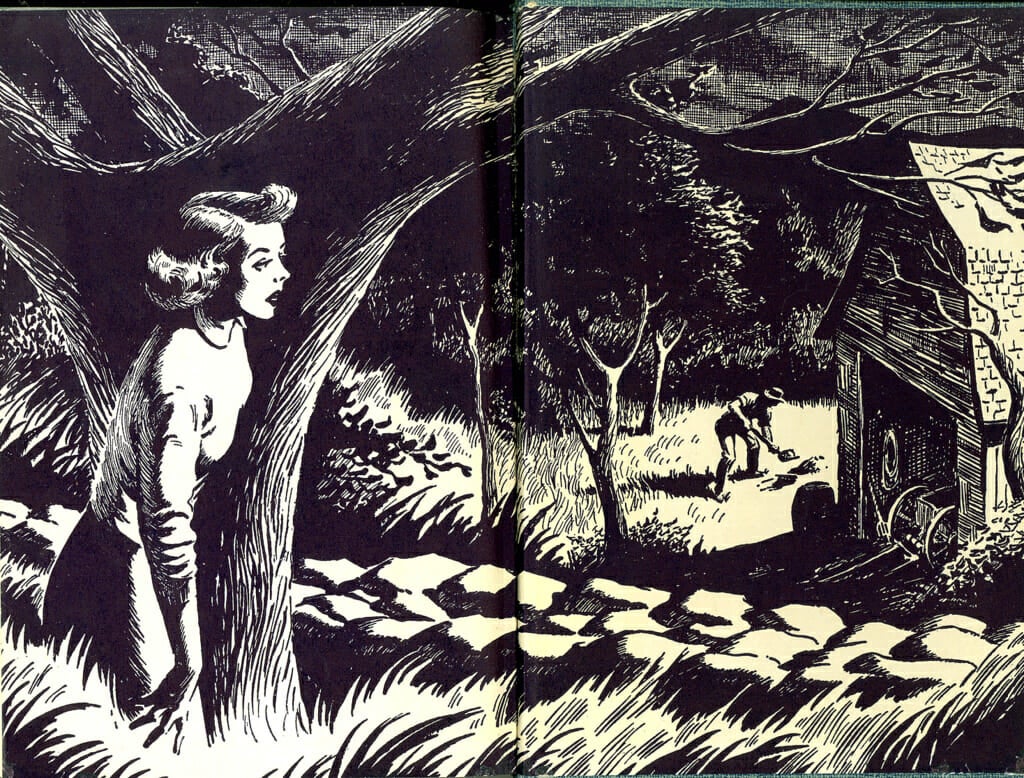
14) Caroline Keane, the pen name for the ghostwriters, was supposed to be Louise Keane, too
Stratemeyer’s suggestion was overruled, again, Rehak wrote.
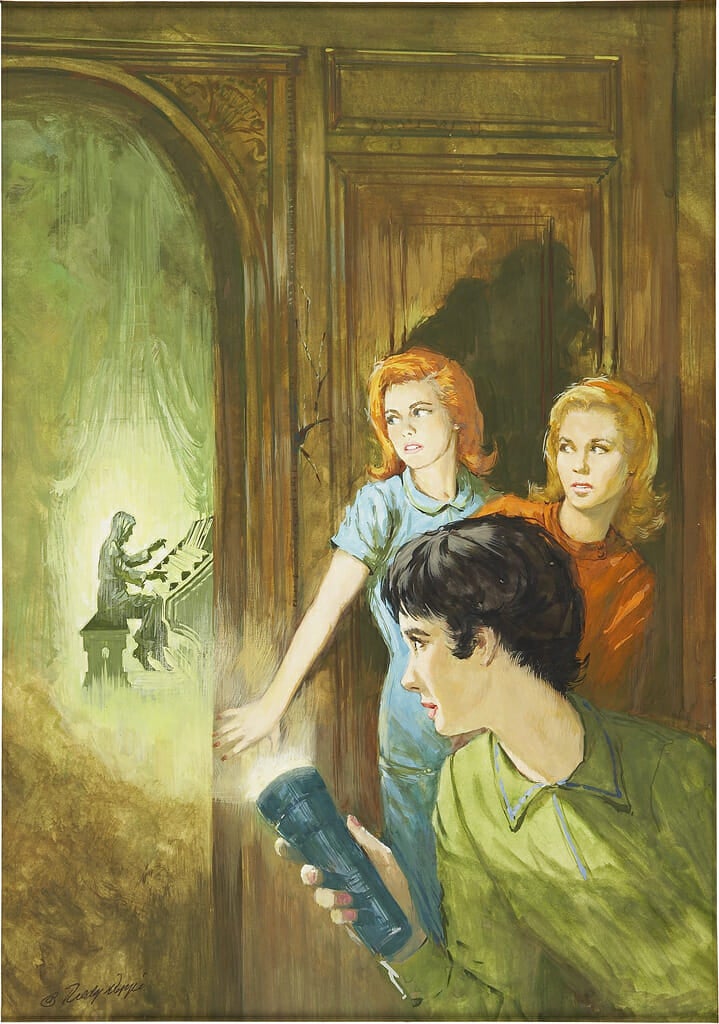
15) Playboy once featured a sexy Nancy Drew cover
In July 1978, Pamela Sue Martin, the original actress who portrayed Nancy in The Nancy Drew Mysteries, appeared on the cover of Playboy—as Nancy.
Refusing to split the bill with the actors who portrayed the Hardy Boys in the trade-off series, Martin quit the Nancy Drew show entirely and ran to the tabloids to scrub away her virginal image, Rehak wrote. For her Playboy cover, Martin bared a loose trench coat and a magnifying glass and even trash-talked Nancy’s prudish nature in her feature interview.
“Nancy Drew never cried or experienced an inordinate amount of pain. There was never any tragedy or extreme emotion. Never a kissing scene or any sign that she would indulge with the opposite sex,” Martin said.
Harriet Stratemeyer Adams, the daughter who took over the Stratemeyer Syndicate, wanted to sue, but was advised by a lawyer to let it go—they couldn’t cost Nancy or the publisher any more bad publicity. Instead, Adams ran ads within the magazine and other publications denouncing the article.
16) Someone actually crowdfunded the ultimate Nancy Drew/Taylor Swift fanfiction crossover series
Before pop star Taylor Swift was prattling on about what you “made her do,” she was solving disappearances and foiling international emerald laundering operations in the style of Nancy Drew. At least, that’s true in the alternate reality created by Chicago-based writer Kitty Curran and illustrator Larissa Zageris for their book Taylor Swift: Girl Detective, The Secrets of the Starbucks Lovers.
Set against the backdrop of Brooklyn, Swift, Lorde, and the rest of the Bad Blood music video girl gang investigate the disappearance of a rising actress’ sister and the threatening messages she keeps finding written on her Starbucks drinks.
From Zageris’ uncanny illustrations of a skeptical, Nancy-esque looking Swift, to the book cover’s replication of the Nancy Drew Mystery Series covers, and the page-turning cliffhangers filled with screams and booby traps, there’s no doubt Nancy is at the heart of this graphic novel.
“[Taylor Swift’s] publicity is focused more on her own derring-doishness and accomplishments than her sex appeal, much like a modern day Nancy Drew,” Curran told Time in 2016. “She also used to dress exactly like Nancy Drew, though now she looks maybe more like the updated 80s version.”
17) Yes, Nancy Drew memes do exist, and they’re hilarious—if you’ve played the computer games before
In these first-person computer games, users play as Nancy (and occasionally as her cousins, or the Hardy boys) to interview suspects, rifle through private files, solve puzzles, and stick Nancy’s nose in other people’s businesses to solve the mystery.
HER Interactive, the game developers, always bring Nancy across a slew of colorful characters with troublesome backstories, or make Nancy complete ridiculous tasks to advance in the game. And while Nancy is a skilled detective, her pursuit for the truth often makes her an awkward person to talk to, with sometimes very little empathy or tact.
Currently the Clue Crew, the name of Nancy’s online fandom, has been meme-ing out over the long-anticipated release of Nancy Drew game no. 33, “Midnight in Salem.” Previously, HER Interactive would release two games per year—one in May, and the second in October. However, since the latest game’s release in 2015, developers have focused their efforts on a Nancy Drew mobile game series, and have yet to confirm a launch date for “Midnight in Salem.”
18) In 2017, NBC announced it had picked up the failed Nancy Drew project
The new Nancy Drew project, however, is set to have very little in common with its 2016 predecessor.
According the Deadline, NBC’s series follows Nancy as the author of the famed detective series, using her childhood adventures with her friends as the inspiration for her writing. Now in their 40s and 50s, the series depicts Nancy these now-estranged friends as they find themselves involved in a murder mystery. All the while, Nancy’s friends have a bone to pick with her for basing her series’ supporting characters off them, and constantly casting herself as the lead in the books.
Series creators Tony Phelan and Joan Rater say Nancy and her friends’ ages “is their superpower; no one notices them when they walk in. It’s a way for them to fly under the radar. They talk about how they feel unseen.” It’s a plot point that will hopefully help expand the narrow list of roles for older Hollywood actresses.
Since then, the CW has produced a new spin on the classic character with its new series Nancy Drew.
Editor’s Note: A previous version mentioned one of the Hardy Boys was named Fred; it’s Frank.
The Daily Dot may receive a payment in connection with purchases of products or services featured in this article. Read our Ethics Policy to learn more.
